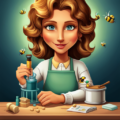Artisans and crafters who work with clay know the importance of having the right tools and equipment. The kiln, a high-temperature oven used to harden and finish pottery, is among the most essential. There are several types of kilns, including electric, gas, and wood-fired. Each has its own unique advantages and is suitable for different kinds of pottery projects.
Electric Kilns
Electric kilns are popular due to their convenience and ease of use. They run on electricity and can be plugged into a standard outlet, making them easy to set up in a home studio. Electric kilns also offer precise temperature control, which is crucial for achieving consistent results. However, they can be costly to operate due to high energy consumption.
Electric kilns are typically front-loading, with a door that swings open for easy access. They are designed with multiple heating elements that provide uniform heat distribution, ensuring that all pieces in the kiln are fired evenly. Some electric kilns also have programmable controllers that allow you to customize the firing schedule based on the specific needs of your project.
Gas Kilns
Gas kilns, which run on propane or natural gas, are known for their ability to reach very high temperatures. This makes them ideal for firing stoneware and porcelain. Gas kilns can also create a reducing atmosphere, which can result in beautiful glaze effects not achievable in an electric kiln.
Gas kilns are typically larger than electric models and require more space and ventilation. They are also more complex to operate, requiring careful monitoring and adjustment during the firing process. However, many potters love the unique results they can achieve with a gas kiln.
Wood-Fired Kilns
Wood-fired kilns offer a traditional approach to pottery firing. The process involves feeding wood into the firebox of the kiln and maintaining the fire over several days. The ash from the burning wood lands on the pottery pieces, melting into a natural glaze.
Wood-firing is labor-intensive and requires significant time commitment. However, it can produce stunningly unique results characterized by earthy tones and textures. Each firing is unique due to variations in wood type, weather conditions, and firing duration.
Essential Pottery Tools and Equipment
Beyond the kiln, there are many other tools that potters need for shaping, decorating, and finishing their work.
Potter’s Wheel: A potter’s wheel is used to shape clay into symmetrical forms such as bowls or vases. There are traditional kick wheels and more modern electric ones.
Hand Tools: These include various shaping tools like ribs, loop tools, needle tools, fettling knives, wire cutters, sponges, brushes and more.
Slab Roller: A slab roller is used to roll out large, even slabs of clay for hand-building techniques like slab construction.
Molds: Molds come in many shapes and sizes for creating uniform pieces or adding decorative elements.
Glazes: Glazes add color and finish to pottery pieces after they’ve been bisque fired. They come in countless colors and finishes.
In conclusion, whether you’re a beginner or an experienced potter looking to expand your skills, understanding different types of kilns as well as essential pottery tools can help you make informed choices about what equipment to invest in next for your craft.

